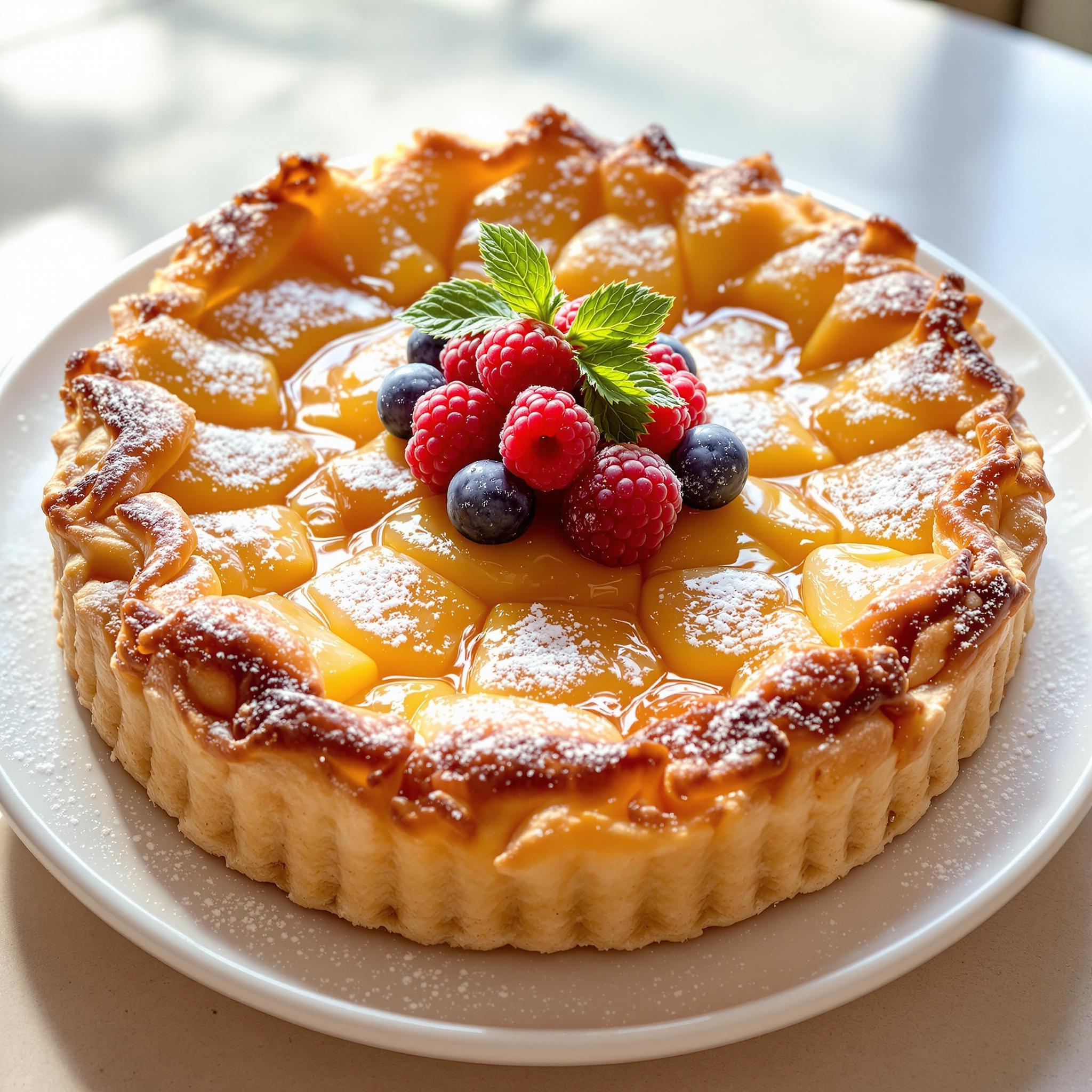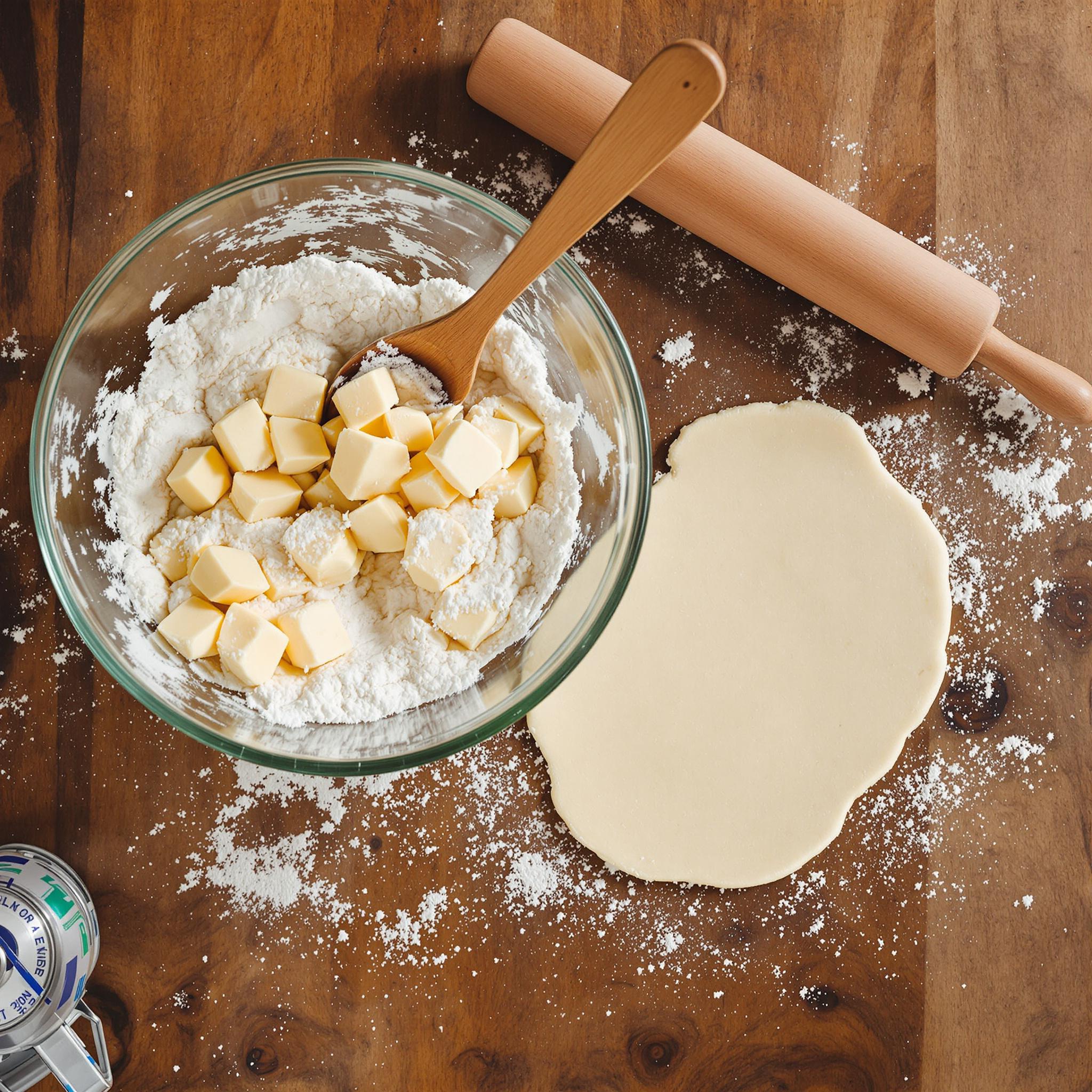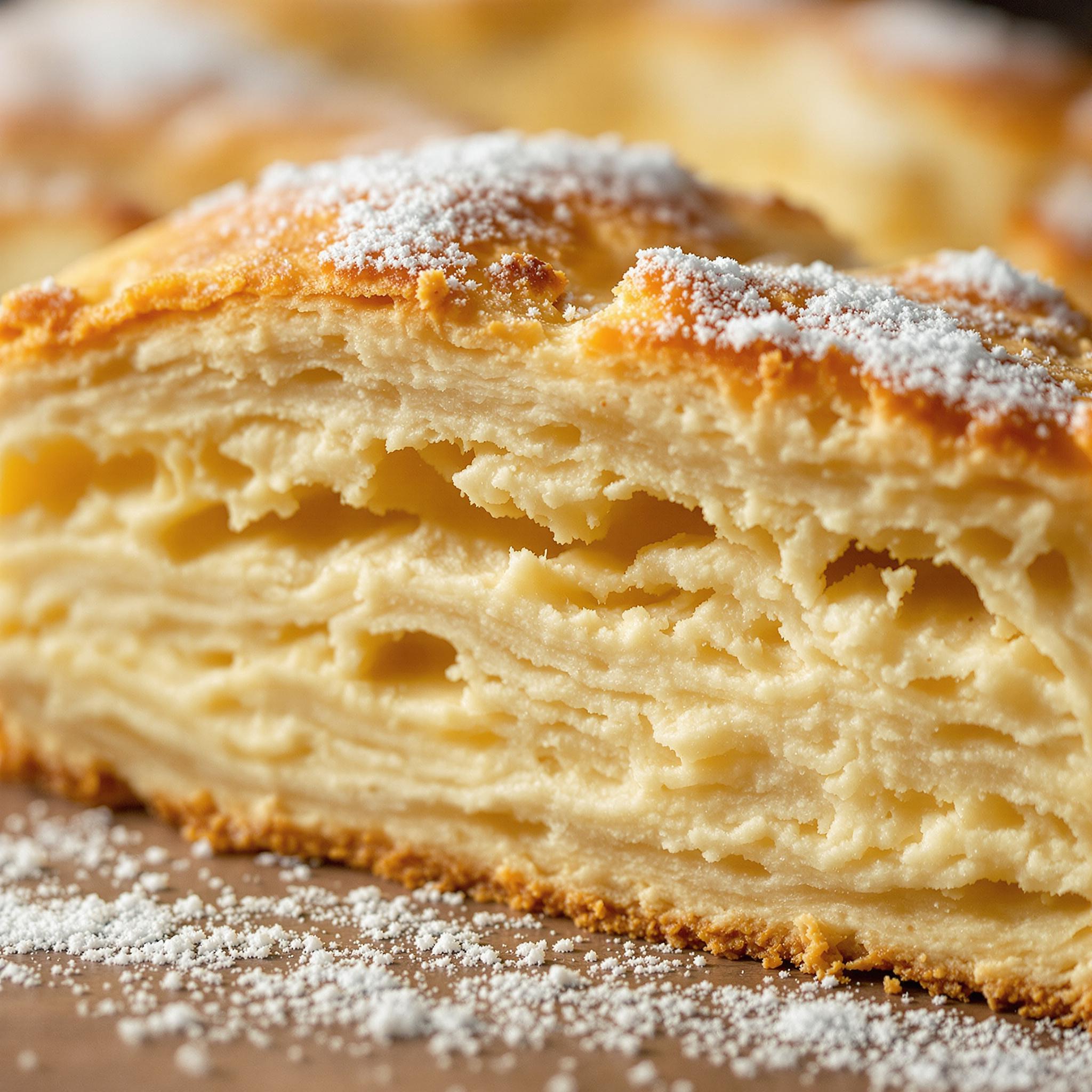
Discover the Magic of Shortcrust Pastry: A Versatile Delight
There’s something truly magical about Shortcrust Pastry. Whether you’re crafting a savory tart, a sweet pie, or even bite-sized appetizers, this buttery, flaky dough is your ticket to culinary success. I remember the first time I made it—it was for a family gathering, and my aunt requested a classic apple pie. The aroma of golden pastry wafting through the house was unforgettable, and everyone raved about how tender and flavorful it was. That day, I realized that mastering homemade shortcrust pastry recipes could elevate any dish from ordinary to extraordinary.
The Origins of Shortcrust Pastry
Shortcrust pastry, also known as pâte brisée in French cuisine, has been a staple in kitchens for centuries. Its simplicity and versatility have made it a favorite across cultures. Historically, it was used as a protective layer for meat pies during medieval times, but over the years, it evolved into a delicate base for both sweet and savory creations. Modern bakers love experimenting with variations like whole wheat shortcrust or gluten-free options, making it accessible to all. My personal twist? Adding a hint of lemon zest for brightness—trust me, it works wonders!
Why You’ll Love This Shortcrust Pastry Recipe
This recipe stands out because it’s incredibly easy to follow, yet delivers professional-quality results every time. Unlike some finicky doughs, shortcrust pastry doesn’t require advanced skills or fancy equipment. Plus, its rich, buttery flavor pairs beautifully with almost anything. Whether you’re baking for yourself or hosting a dinner party, this dough will become your go-to choice.
Perfect Occasions to Prepare Shortcrust Pastry
From holiday feasts to cozy Sunday brunches, shortcrust pastry dishes are perfect for any occasion. Picture serving warm quiches at a spring picnic or presenting an elegant fruit tart at a birthday celebration. It’s also ideal for last-minute gatherings since the dough can be prepared ahead of time and stored in the fridge or freezer.
Ingredients for Perfect Shortcrust Pastry
- 2 cups all-purpose flour
- 1 cup unsalted butter, chilled and cubed
- 1/2 teaspoon salt
- 1 tablespoon sugar (optional for sweet pastries)
- 6-8 tablespoons ice water
Substitution Options for Flexibility
- Swap all-purpose flour with whole wheat flour for a nuttier taste.
- Use vegan butter or coconut oil instead of regular butter for dairy-free versions.
- Replace sugar with honey or maple syrup if you prefer natural sweeteners.
Preparation: Step-by-Step Guide to Flawless Shortcrust Pastry
Step 1: Combine Dry Ingredients
Start by sifting the flour, salt, and sugar (if using) into a large mixing bowl. Sifting not only removes lumps but also aerates the flour, ensuring a lighter texture. As you mix these dry ingredients, imagine the foundation of your pastry taking shape—a blank canvas ready to transform into something delicious.
Step 2: Cut in the Butter
Add the chilled, cubed butter to the flour mixture. Using your fingertips or a pastry cutter, work the butter into the flour until the mixture resembles coarse breadcrumbs. This step is crucial for achieving that signature crumbly texture. Pro tip: Keep everything cold! Warm hands can soften the butter, which affects the final result.
Step 3: Add Ice Water Gradually
Sprinkle ice water, one tablespoon at a time, over the mixture while gently mixing with a fork. Stop adding water once the dough begins to come together. Be careful not to overwork it; too much handling can make the pastry tough. When done correctly, the dough should hold together when pressed but still feel slightly crumbly.
Step 4: Rest the Dough
Shape the dough into a flat disc, wrap it tightly in plastic wrap, and let it rest in the refrigerator for at least 30 minutes. This resting period allows the gluten to relax, making the dough easier to roll out later. While waiting, take a moment to appreciate the anticipation—the best part of cooking is often the journey itself.
Chef’s Tip: Enhance Your Shortcrust Pastry
For an extra burst of flavor, try incorporating finely grated Parmesan cheese into the dough for savory recipes or a dash of vanilla extract for sweet ones. These small tweaks can make a big difference and impress your guests without much effort.
Time Breakdown for Shortcrust Pastry
- Prep Time: 15 minutes
- Resting Time: 30 minutes
- Cooking Time: Varies depending on the filling
- Total Time: Approximately 45 minutes + cooking
Nutritional Information
Per serving (based on 8 servings): Calories: 220 | Protein: 3g | Fat: 15g | Carbohydrates: 20g | Fiber: 1g
Extra Information: Did You Know?
The term “short” in shortcrust pastry refers to the high fat content, which creates a tender, crumbly texture. In old English, “short” meant tender, hence the name!
Necessary Tools for Making Shortcrust Pastry
- Large mixing bowl
- Pastry cutter or fork
- Rolling pin
- Plastic wrap
- Baking sheet or tart pan
Storage Instructions for Shortcrust Pastry
Once prepared, shortcrust pastry can be stored in the refrigerator for up to 3 days. Wrap it tightly in plastic wrap to prevent it from drying out. For longer storage, freeze the dough for up to 3 months. Simply thaw it overnight in the fridge before use.
If you’ve already baked your pastry, store leftovers in an airtight container at room temperature for up to 2 days. Beyond that, refrigerate them to maintain freshness. Reheat gently in the oven to restore crispiness.
Avoid stacking unbaked pastries directly on top of each other, as they may stick together. Instead, place parchment paper between layers for easy separation.
Tips and Tricks for Better Shortcrust Pastry
- Always chill your ingredients beforehand—it’s key to achieving flakiness.
- Don’t skip the resting step; it prevents shrinkage during baking.
- Roll out the dough between two sheets of parchment paper to avoid sticking.
Serving Suggestions for Shortcrust Pastry
- Fill with fresh berries and whipped cream for a delightful summer dessert.
- Top with caramelized onions, spinach, and feta for a savory tart.
Healthier Alternatives for Shortcrust Pastry
Looking to lighten up your shortcrust pastry? Here are six healthier variations:
- Whole Grain Option: Substitute half the all-purpose flour with whole wheat flour for added fiber.
- Vegan Version: Use plant-based butter and almond milk instead of traditional ingredients.
- Low-Fat Twist: Reduce the butter by 25% and add Greek yogurt for moisture.
- Sugar-Free Sweetness: Replace sugar with stevia or monk fruit for a low-calorie alternative.
- Gluten-Free Goodness: Swap regular flour with a gluten-free blend designed for baking.
- Herb-Infused Savory Pastry: Mix dried herbs like rosemary or thyme into the dough for extra flavor without extra calories.
Common Mistakes to Avoid
Mistake 1: Overworking the Dough
One of the most common errors is overhandling the dough, which leads to tough, chewy pastry. To avoid this, handle the dough as little as possible and stop mixing as soon as it comes together. Pro tip: Use a light touch and keep your workspace cool to maintain the butter’s integrity.
Mistake 2: Skipping the Resting Period
Rushing through the process might seem tempting, but skipping the resting time can cause the dough to shrink unevenly in the oven. Always allow the dough to chill—it’s worth the wait!
Mistake 3: Adding Too Much Water
Excess water makes the dough sticky and difficult to work with. Add water gradually, one tablespoon at a time, until the dough just holds together. Remember, you can always add more, but you can’t take it away.
Frequently Asked Questions About Shortcrust Pastry
Can I Make Shortcrust Pastry Ahead of Time?
Absolutely! You can prepare the dough up to 3 days in advance and store it in the fridge. For longer storage, freeze it for up to 3 months. Just remember to thaw it completely before rolling it out.
What Can I Use Instead of Butter?
If you’re looking for alternatives, margarine or coconut oil works well. However, keep in mind that butter provides the best flavor and texture.
How Do I Prevent My Pastry from Shrinking?
To minimize shrinkage, ensure the dough is well-rested and avoid stretching it while lining your pan. Pricking the bottom with a fork before baking also helps release steam.
Is Shortcrust Pastry Gluten-Free?
Not traditionally, but you can easily adapt it by using a gluten-free flour blend. The texture may vary slightly, but it will still be delicious.
Can I Freeze Baked Shortcrust Pastry?
Yes, baked pastry freezes beautifully. Store it in an airtight container and reheat in the oven for best results.
Why Does My Pastry Taste Dry?
Dry pastry usually happens when there’s insufficient fat or too much flour. Measure your ingredients carefully and don’t skimp on the butter.
What Fillings Pair Well with Shortcrust Pastry?
Almost anything! From creamy custards to hearty vegetables, shortcrust pastry complements both sweet and savory fillings.
How Thick Should I Roll Out the Dough?
Aim for about 1/8 inch thickness. This ensures the pastry cooks evenly without becoming soggy or overly dense.
Can I Use a Food Processor?
Yes, a food processor speeds up the process. Pulse the ingredients briefly to combine, being careful not to overmix.
Why Is My Pastry Cracking?
Cracks occur when the dough is too dry. Knead it gently to bring it back together, or add a tiny bit more water if needed.
Conclusion
With its buttery richness and endless versatility, shortcrust pastry deserves a permanent spot in your recipe collection. Whether you’re whipping up a quick weeknight quiche or indulging in a decadent dessert, this dough never disappoints. So grab your apron, gather your ingredients, and let’s get baking—you won’t regret it!

Equipment
- Large mixing bowl
- Pastry cutter or fork
- Rolling pin
- Plastic wrap
- Baking sheet or tart pan
Ingredients
- 2 cups all-purpose flour
- 1 cup unsalted butter, chilled and cubed
- 1/2 teaspoon salt
- 1 tablespoon sugar (optional for sweet pastries)
- 6-8 tablespoons ice water
Instructions
- Start by sifting the flour, salt, and sugar (if using) into a large mixing bowl. Sifting not only removes lumps but also aerates the flour, ensuring a lighter texture.
- Add the chilled, cubed butter to the flour mixture. Using your fingertips or a pastry cutter, work the butter into the flour until the mixture resembles coarse breadcrumbs.
- Sprinkle ice water, one tablespoon at a time, over the mixture while gently mixing with a fork. Stop adding water once the dough begins to come together.
- Shape the dough into a flat disc, wrap it tightly in plastic wrap, and let it rest in the refrigerator for at least 30 minutes.


